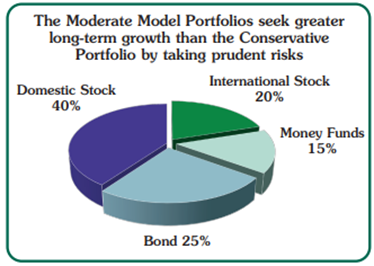A bipartisan agreement to raise the debt ceiling until January 2025 – coupled with a “Goldilocks” labor report – recently pushed stocks ahead sharply. More importantly, a consumer more resilient than most expected is becoming the cornerstone of a soft economic landing scenario for the US economy. Buy Harbor Capital Appreciation Fund (HCAIX) to help ensure a better value/growth balance, advises Brian Kelly, editor of Money Letter.
The soft-landing scenario is good news as this development mitigates the investment risks of a significant recession. Unfortunately, the price we’ll pay over the next several months is a market that will not be propelled forward by the interest rate cuts it so desperately wants.
First, we should probably take a moment to define what a “soft landing” is. In basic terms a soft landing is an effort by the Federal Reserve Open Market Committee (FOMC) to slow the economy and bring down inflation, while preventing the US from entering recession. Our base case, in no small part due to the strength of the labor markets (and by extension consumer spending), is that the Powell Fed will continue to push the inflation numbers in the direction of the 2% target without causing the economy to tip into recession.
 We are probably in the minority calling for the soft landing. For example, two of the firms we follow closely – Capital Group and AGF Insights – are both calling for a recession, either later this year or in 2024.
We are probably in the minority calling for the soft landing. For example, two of the firms we follow closely – Capital Group and AGF Insights – are both calling for a recession, either later this year or in 2024.
Capital Group’s economist Jared Franz thinks the economy will shrink by one percent in 2023. He points to the inversion of the yield curve as the key.
Kevin McCreadie, CEO and Chief Investment Officer of AGF, thinks we’ll likely enter recession due to the lag effects of the Fed raising interest rates so quickly. They both may be right. But it’s a good time to mention that back in August 2022 we asked if it matters if we’re in a slowdown (i.e., “soft landing”) or mild recession. Answer: Not really, as long as it is mild.
We are maintaining our asset allocation recommendations due to our near-term outlook for lower inflation, peaking interest rates, and a soft landing for the US economy. We expect volatility to continue in the equity markets until we get more confidence in the speed of disinflation.
While it looks like the markets will remain rangebound for the summer, the market outlook for the 4th Quarter and into 2024 looks brighter. A realistic scenario is continued progress on inflation while the economy eases into a slowdown. This would open the door to Fed cuts either very late in 2023 or into 2024. We want to be in the market well in advance of the first rate cut.
Recommended Action: Buy HCAIX.

















